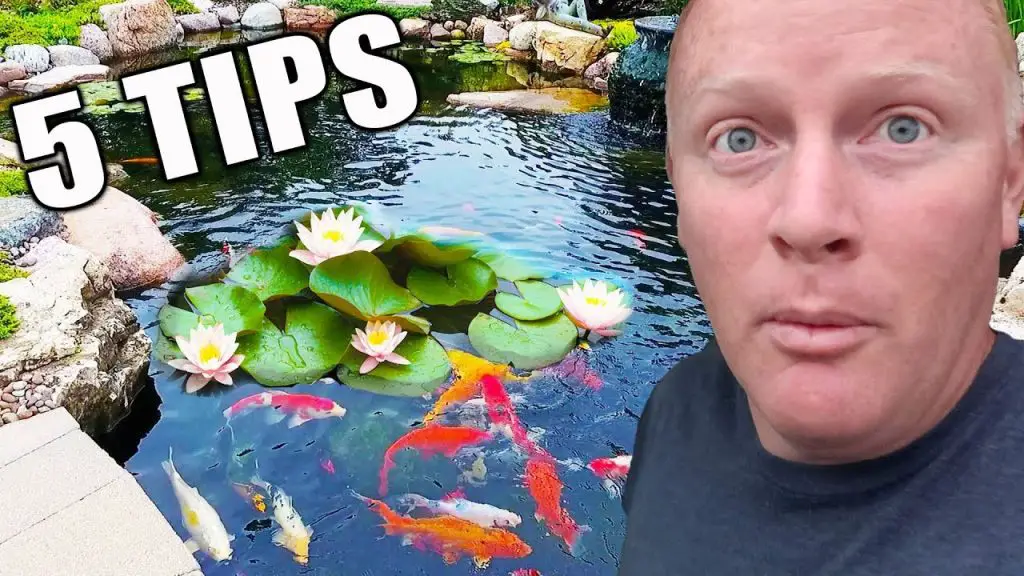Water lilies are beautiful aquatic plants that can enhance the aesthetic appeal of any natural pond. These stunning plants not only add beauty but also provide shade for fish and other aquatic life. If you are looking to plant water lilies in your natural pond, here is a step-by-step guide to help you do it successfully.

Credit: www.gardenersworld.com
1. Choose the Right Water Lily Variety
Before you start planting water lilies in your pond, it is important to choose the right variety that will thrive in your specific climate and water conditions. There are different types of water lilies, such as hardy water lilies and tropical water lilies. Hardy water lilies are more suitable for colder climates, while tropical water lilies thrive in warmer climates.
2. Select the Ideal Planting Spot
Water lilies require plenty of sunlight to grow and bloom. Therefore, choose a spot in your pond that receives at least 6 hours of direct sunlight each day. Avoid planting water lilies in areas with strong currents or water movement, as this can damage the delicate blooms.
3. Prepare the Planting Container
Water lilies are typically planted in containers to prevent them from spreading uncontrollably in your pond. Select a planting container that is at least 10-16 inches deep to allow the water lily roots to spread and grow. Fill the container with a heavy loam soil or a specialized aquatic planting mix.
4. Planting the Water Lily
When planting the water lily, gently remove it from its nursery pot and place it in the center of the planting container. Position the plant so that the growing tip is facing upwards. Cover the roots with soil, leaving the crown of the plant exposed. Gently press the soil around the roots to secure the plant in place.
5. Submerge the Planting Container
After planting the water lily, submerge the planting container in the pond at the desired planting depth. The ideal planting depth for water lilies is around 12-18 inches below the water surface. Ensure that the water lily leaves will float on the water surface once the plant is fully established.
6. Fertilize the Water Lily
Water lilies are heavy feeders and require regular fertilization to promote healthy growth and abundant blooms. Use a specialized aquatic plant fertilizer tablet and insert it into the soil near the roots of the water lily. Follow the manufacturer’s instructions for the correct dosage and frequency of fertilization.
7. Maintain the Water Lily
Once the water lily is planted and established in your pond, it is essential to maintain it properly to ensure its continued growth and blooming. Regularly remove any dead or decaying leaves from the plant, as these can attract pests and diseases. Monitor the water quality and make sure it is within the optimal range for water lilies.

Credit: www.pondworksonline.com
8. Divide and Repot the Water Lily
Over time, water lilies can outgrow their containers and become overcrowded. When this happens, it is time to divide the plant and repot it into separate containers. Dividing water lilies also helps rejuvenate the plant and promote better growth and blooming.
9. Protect the Water Lily from Pests
Water lilies are susceptible to pests such as aphids, snails, and caterpillars, which can damage the leaves and flowers. To protect your water lilies from pests, regularly inspect the plants for any signs of infestation and take appropriate measures to control the pests. Avoid using chemical pesticides that can harm aquatic life in your pond.
10. Enjoy the Beauty of Your Water Lilies
Once you have successfully planted and cared for your water lilies, sit back and enjoy the beauty they bring to your natural pond. Watch as the colorful blooms open in the sunlight and attract pollinators such as bees and butterflies. Water lilies are not only a visual delight but also contribute to the overall health of your pond ecosystem.
By following these steps and tips, you can plant water lilies in your natural pond and create a stunning aquatic garden that will be the envy of your neighbors. With proper care and maintenance, your water lilies will thrive and bring joy to you for years to come.


